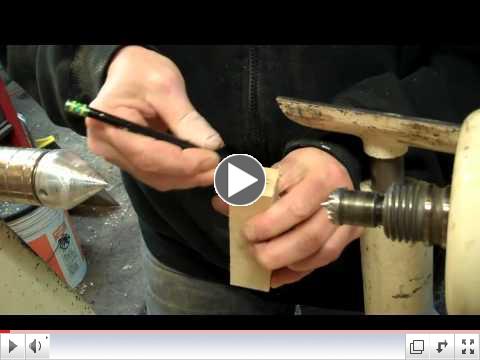 |
Questions & Answers
Q: I am a woodturner and a member of the Chippewa Valley Woodturners Guild. I would like the listing of the FDA-approved wood finishing products such as oils, etc. Thank you, Dennis from WI
A:
The topic of food safe finishes is a recurring theme for many woodturners and woodworkers who envision placing their projects in contact with food, drink, or any materials meant to be consumed. Some of the concerns raised about whether something is "food safe" or not stem from invalid assumptions about the nature of the available finishes used to protect the wood, accentuate its figure, and reduce infiltration of moisture and other materials from the food into the wood. While in their liquid state, most finishes should be considered "toxic" and unsafe for human consumption due to the presence of solvents used to carry the actual finish into or onto the wood surface. However, once the finish has "matured" to its final state, many would argue that nearly all finishes are "food safe," specifically with regard to direct contact with food, such that no undesirable chemicals will leach out of the wood and finish into the food material being consumed. If you don't eat or drink the finish, it's food safe!
Read the complete answer from Rob Wallace |
|
AAW Project Books
These 8.5"x11" books are full of ideas, inspiration, and instruction! Each book features articles from American Woodturner.
Please click here to access product details
Special offer:
Project Book I:
1987-1992 $5
Project Book II:
1993-1995 $5
Project Book III:
1996-1998 $10
Project Book IV:
1999-2001 $10
Project Book V:
2002-2004 $10

|
|
Woodturning Fundamentals Committee Members
|
|
Greetings!
Welcome to
Woodturning Fundamentals!
Please let me welcome you to a new educational effort by the American Association of Woodturners. We call it "Woodturning Fundamentals". Created by our Program Director, Linda Ferber, it will be an easy to find and easy to use area of multimedia materials on all facets of woodturning.
This is an opt-in program so you can encourage your friends to join at this link to receive the announcement emails or just check back often. The release of new materials will be timed to alternate with the publishing of the American Woodturner, our journal. Between these two, you'll have new materials to enjoy each month.
The contributors to Woodturning Fundamentals include Nick Cook, Rob Wallace, Beth Ireland, Keith Tompkins, Mark Knierim, Joe Herrmann, Linda Ferber, and Kurt Hertzog. In our content, we'll include past journal materials, specially created articles, tool and equipment reviews, educational video clips, tips and tricks, and questions & answers.
Feel free to send in questions for the Q&A as well as suggestions for content or improvement in our Woodturning Fundamentals program. We look forward to hearing from you.
Best,
Kurt Hertzog
Chair - Chapters and Membership Committee
|
|
|
Sharpening Tip
When discussing the fundamentals of turning, proper sharpening techniques must be at the top of the list. Many problems new turners experience can be traced back to improperly sharpened tools, so in this segment, we will discuss sharpening the skew chisel. After all, what tool could be more troublesome?
|
| Safety Tip
The Mid-South Woodturners Guild has established a Video Safety Group which posts lathe safety videos.
 | |
Turn Safe 3 - Dress for Safety
|
Supporters of the project include: Woodturners America, who originated the idea of the fund; the AAW for its strong financial support; the West Tennessee Woodturners for significant funds; and many individuals who have contributed generously.
|
Skill Building Tip
Stop! Don't do that! Twenty Ways Not to Turn a Bowl -by Nick Cook When it was suggested that I write this article, I wondered if it was because someone thought I didn't know how to turn a bowl. I was assured that I drew this assignment not because I'm inexperienced at bowl turning but rather because I have had so many woodturning students.
I have been teaching woodturning for more than 20 years, and many of the classes have been basic, for beginners, or an introduction to woodturning. You can ask anyone who has been involved in one of these classes and they will tell you that my most frequently used direction is: "Stop, don't do that!"
Article reprinted from American Woodturner Spring 2006 |
Video Tip
 | |
Quick Trick to Finding the Center |
Beth Ireland has been a production woodworker/woodturner for twenty-eight years. She received her MFA in Sculpture in 2010 and uses her turning skill to create sculptural art work as well as traditional architectural pieces. She has just completed a one-year project traveling around the country, teaching traditional hand skills, in a van renovated to be both shop and living space. Learn more about Beth at bethireland.net, and turningaroundamerica.com |
|
|
|
|